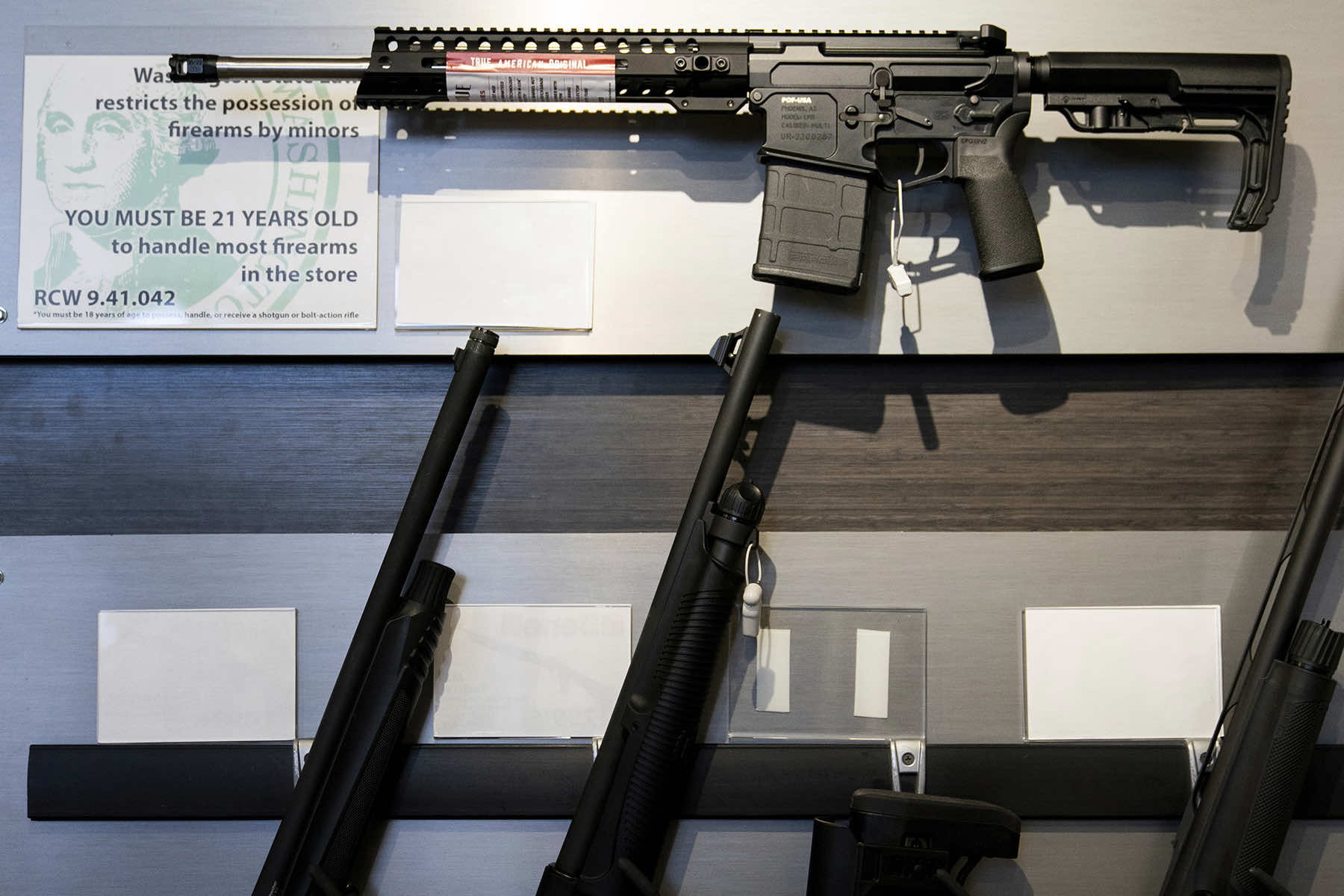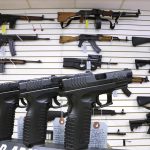
In May 2015, a military helicopter in western Mexico was brought down in a blaze of bullets and rocket-propelled grenades. The weapon that disabled the aircraft was a Browning .50-caliber machine gun. It was not stolen from a government armory or purchased on an international black market. It was legally bought in Oregon.
This was not an isolated incident. In fact, thousands of firearms legally purchased from U.S. gun dealers, both independent and chain-operated, have ended up in the hands of Mexico’s most violent cartels. These weapons have been traced back to U.S. stores through confidential government data, leaks, and court records, revealing a vast and largely unregulated flow of firepower crossing the southern border.
Sean Campbell and Topher McDougal, writing for “The Conversation,” were among the first to document the trafficking networks and firearm flows now at the center of renewed public attention.
A deep investigation into this arms trafficking has drawn on millions of leaked Mexican government documents, thousands of U.S. court filings, and weapon trace records. The result is a sobering estimate.
Over 135,000 guns were trafficked from the U.S. into Mexico in a single year, 2022. This illicit flow is not only fueling Mexico’s gang wars, but also compounding the drug crisis in the U.S. and accelerating the migration of people fleeing cartel violence.
While the U.S. has poured billions into Mexican security assistance, American gun laws have undercut those efforts. Despite numerous studies tying the influx of trafficked firearms to rising homicide rates in Mexico, federal agencies have limited tools to stop the flow. One of the key agencies, the Bureau of Alcohol, Tobacco, Firearms and Explosives, has seen its oversight powers steadily eroded since the 1980s.
Investigators found that the majority of trafficked firearms originate from small, independent gun shops, not big-name chain stores. These smaller dealers were 16 times more likely to sell assault-style rifles and 60 times more likely to sell sniper-grade weapons. They are the type of firepower cartels covet for intimidation, territorial control, and clashes with law enforcement.
Some of the most lethal weapons recovered at cartel crime scenes, including .50-caliber rifles capable of disabling vehicles from more than a mile away, were traced to modest storefronts in Oregon, Arizona, and border-state towns. These shops often completed transactions for cash, no questions asked, and in some cases were later linked to straw purchases and illegal exports.
Despite efforts by the ATF to ramp up inspections, the agency’s reach remains limited. With more than 75,000 federally licensed gun dealers across the country, and only several hundred inspectors in the field, the odds that a problematic shop will be reviewed are low. According to internal estimates, fewer than 6% of dealers received an inspection in 2020. While that number rose slightly in 2024, funding and staffing gaps persist.
Tracing a single firearm from sale to seizure is painstaking and often inconclusive. A federal ban on centralized gun records, established under the 2003 Tiahrt Amendments, forces the ATF to maintain paper-based archives. Without the ability to track sales in real time or access dealer-level trace data, researchers and law enforcement alike are forced to rely on incomplete pictures of a sprawling trade.
The toll in Mexico is measurable. Researchers modeled the correlation between weapons trafficked from the U.S. and Mexico’s rising homicide rate. Their estimate showed that for every 10,000 additional firearms smuggled south, the homicide rate increases by up to 2.5 deaths per 100,000 people annually. That surge of violence not only overwhelms Mexican authorities but also fuels waves of displacement and migration.
Nearly nine out of ten Mexicans who migrated to the U.S. in 2023 did so to escape violence, a reversal from earlier decades when economic opportunity was the primary driver. Humanitarian agencies along the Mexico-U.S. border report growing numbers of families fleeing cartel-occupied towns.
The link between U.S. guns and cartel brutality has been documented extensively. In town after town, American-made firearms have been recovered at crime scenes where civilians were terrorized, homes were burned, and entire families forced into exile. These weapons, once legally sold from rural gun shops and suburban outlets, resurface deep in cartel territory, often stripped of serial numbers but still traceable to their origin.
The data used in this analysis confirms what Mexican officials have long alleged: U.S. firearm policy is a central enabler of cartel militarization.
The firepower cartels now possess is staggering. Military-grade rifles, belt-fed machine guns, and grenade-launching attachments are supplied by dealers who technically operate within the boundaries of U.S. law. In multiple cases, gun stores sold dozens of high-caliber rifles in single transactions, often for cash, and sometimes to the same buyer across consecutive days.
These transactions are not necessarily illegal, but they are red flags for trafficking, and enforcement lags far behind. One small-town dealer in Oregon sold a batch of Barrett .50-caliber rifles that were later discovered hidden in a tractor-trailer of alfalfa in northern Mexico.
In another case, a gun shop in Ohio sold more than 60 such weapons to a network tied to a drug cartel. Dealers involved in these sales rarely face serious consequences, and the legal standard for proving complicity remains high. Prosecuting trafficking rings can take years and involves proving that what appears legal on paper was intended for criminal use.
The regulatory gaps are not accidental. Over the past four decades, federal law has increasingly protected gun sellers and restricted oversight. Starting with the 1986 Firearms Owners’ Protection Act, and solidified by the Tiahrt Amendments in the early 2000s, Congress has shielded the industry from scrutiny and civil liability.
Even successful background checks are required by law to be deleted within 24 hours. These measures were passed under the guise of protecting individual rights, but they’ve also created a haven for traffickers who exploit the system’s blind spots.
Meanwhile, the demand for powerful weapons among cartels continues to grow. As Mexican law enforcement agencies attempt to keep pace by arming their own forces, a dangerous arms race ensues, funded on both ends by the same U.S. firearm market. Cartels get their weapons from U.S. stores. Law enforcement responds by buying more weapons, often from the same sources.
The violence these weapons enable is not limited to confrontations between cartels or with the military. Entire communities have been displaced, schools closed, and children orphaned. In Guerrero, Jalisco, and Michoacan — states with heavy cartel presence — residents describe checkpoints manned by armed groups, roads patrolled by gunmen, and attacks launched with terrifying precision.
Many victims are not involved in the drug trade at all. Families forced from their homes often end up in border shelters or urban slums, waiting for asylum, or attempting the dangerous journey north. According to federal border data, the number of family encounters and unaccompanied minors surged to historic highs between 2017 and 2023. Behind many of those crossings lies a direct line from U.S. gun stores to cartel arsenals.
Regulatory enforcement remains threadbare. The ATF has increased license revocations in recent years, especially under zero-tolerance policies implemented in 2021. But the scope of the problem dwarfs the agency’s capacity. Its own estimates indicate that more than 1,500 field investigators would be needed to inspect every dealer once every three years. It currently employs less than half that number.
Even where enforcement is possible, political pressure undercuts it. Dealers found to be repeat sources of crime guns often close and reopen under new names, sometimes in different states. Others sue the ATF to weaken enforcement rules. And under the Trump regime, the bureau faces additional internal disruption, including leadership changes and proposals to merge it with unrelated agencies.
Data transparency also remains a barrier. While environmental and labor regulators publish enforcement records publicly, the ATF is restricted from revealing which dealers have committed violations, as a legal consequence of industry lobbying. The effect is a regulatory environment where illicit activity can flourish under the cover of legal ambiguity.
The impact of U.S. firearm exports, both legal and illicit, is felt most acutely by those with no connection to the trade: families driven from their towns, victims of stray bullets, survivors of extortion and kidnapping. Some carry the trauma with them to the U.S. border. Others remain displaced inside Mexico, with no pathway to safety.
As one displaced woman from Guerrero told researchers, the promise of America as a refuge fades when it becomes clear that the weapons causing their suffering originated there.
The same gun stores that serve sportsmen and collectors in rural states are enabling a crisis that spans continents, through a web of straw buyers, underregulated sales, and political impunity.
Minimal oversight, legal loopholes, and under-resourced enforcement have allowed a domestic industry to feed an international emergency. Without significant reform, the flow of American firearms into Mexico will continue to escalate the violence, drug trafficking, and migration pressures now defining the Mexico-U.S. border.
© Photo
Seth Perlman (AP) and Lindsey Wasson (AP)















